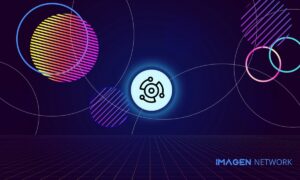Education technology, or edtech, doesn’t get as much attention as some corners of the software universe.
At least, it hasn’t lately. But that could be changing in a big way, thanks to some under-appreciated and potentially powerful trends at work under the surface.
What are those trends? How should parents and learners respond to them? What do they mean for business leaders and investors in the space?
The answers to these questions and more await. Let’s dive in and take a look at the top 10 edtech trends to watch in 2024 and beyond.
- A New Group of “Educator Assist” Tools Is Emerging
Earlier generations of edtech software tended to focus more on self-paced learning or one-on-one tutoring. There is still a place in the ecosystem for these tools, as we’ll explore below.
But one emerging trend that’s impossible to ignore any longer is the rise of what we’ll call “educator assist” tools. These range from single-purpose software that helps educators with one particular aspect of their work to powerful, multifaceted platforms like Age of Learning, a buzzy edtech startup backed by EarthLink founder Sky Dayton and other high-profile entrepreneurs and investors.
Educator assist tools have tremendous potential in a world where artificial intelligence and machine learning play an increasingly central role in learning. Which brings us to the next key edtech trend to watch in 2024.
- AI Is Front and Center in EdTech Solutions
This probably doesn’t come off as “breaking news” any longer, but anyone interested in edtech — or in the business and science of learning, more generally — needs to acknowledge it.
We also need to separate hype from fact. Right now, generative AI mostly helps make existing tools more efficient and effective. We see this in the tutoring space especially, but most edtech apps now incorporate “gen AI” in some fashion. Still, it’s mostly a marginal benefit at the moment.
That will change soon. Generative AI is a fast-evolving area, and we should expect the models underpinning edtech solutions to improve quickly. Edtech software developers should think about how to adapt cutting-edge solutions without compromising core app functions, while educators and parents need to adapt their own processes and expectations to an increasingly AI-enabled future.
- Human Tutoring Is Changing, But Not Going Away Completely
Nowhere in edtech is the disruptive power of gen AI more obvious than in the tutoring space, which has been thoroughly transformed since ChatGPT’s release in 2022.
The good news for tutoring apps is that the disruption hasn’t been fatal. In fact, it has been good for business, thanks to enhanced efficiencies that reduce the need for human input. In the near future, more powerful generative AI models will further automate tutoring while offering more personalized solutions for learners and educators alike.
- Generative AI Is a Problem for Educators — And a Solution
Those personalized solutions extend beyond the four “walls” of tutoring apps, which many educators have a love-hate relationship with anyway, and into other edtech niches. At some point, “edtech” will be indistinguishable from “educational AI,” with machine learning algorithms eating just about everything on the software side.
However, this future won’t arrive right away. In the meantime, educators have real problems with AI that proponents can’t wave away. The biggest is that apps like ChatGPT make it easier for students to cheat on open-ended essay-type assignments by passing off the chatbot’s work as their own. Generative AI also has subtler downsides, such as reducing the need for critical thinking or providing inaccurate contextual information that distorts students’ understanding of key concepts.
Some AI proponents argue that an earlier generation of educators raised similar objections about Google search, and the worry proved largely unfounded. But generative AI is different, so we should take its issues seriously. We should also acknowledge that it’s here to stay.
So, rather than ban it outright, educators should incorporate it into human-led learning assignments. For example, students might attempt to “reverse engineer” ChatGPT’s output, or do original research to interrogate its biases or inaccuracies in response to certain prompts.
- Self-Paced Learning Is Finally Coming Into Its Own
“Self-paced learning” solutions are finally ready for prime time thanks not only to generative AI but to wider advances in our understanding of how people absorb information — and how differently the process can work for different people.
What’s really promising about the self-paced learning space is its increasingly powerful intersection with social-emotional learning, another powerful concept we’re just beginning to exploit to its potential. As technology makes it easier for dispersed learners to interact and engage with one another and their educators, a revolution in self-directed learning could follow.
- Homeschooling Is Going High-Tech
Some homeschool parents were always ahead of the tech curve, but a new, user-friendly set of homeschooling apps is helping everyone else catch up.
It’s not just apps designed specifically for learning. Software that doesn’t really qualify as “edtech,” such as high-capacity cloud storage tools, is now indispensable for all but the most traditional home educators. Their relative cost is falling, too, which is great news for everyone.
- Practical Skills Are Easier to Teach Virtually
Perhaps you’ve heard about the trend of Gen Z learners skipping four-year college in favor of trade schools or apprenticeship programs. This is just one example of a broader trend toward “practical education” that is being enabled by new, powerful edtech solutions.
These solutions help educators and self-directed learners impart valuable, practical skills in a virtual environment. To learn by doing, in effect, without necessarily “doing” in the real world.
There’s no substitute for true hands-on learning yet, of course. But that could change as virtual reality and augmented reality become more lifelike and the next generation of learners — Gen Alpha — gets more comfortable in simulated environments.
- The MOOC Wave Has Crested (For Now)
One final edtech trend that’s worth watching is the declining popularity of massive open online courses, or MOOCs. The factors behind this decline are difficult to disentangle, and it’s not clear yet whether it’s a permanent shift or more of a bounceback from the pandemic period. However, it does seem that the edtech consensus right now is “smaller is better.”
The Business of Learning Is Good
Let’s take a few steps back and survey the edtech landscape. Not the individual companies or entrepreneurs that comprise it, but the ecosystem as a whole.
Once we do this, we see that edtech is in a very good place. Improvements in generative AI are of course what everyone has been buzzing about recently, but there’s much more happening under the service.
Even more important than any one “gen AI” tool, for example, is the advancing science of technology-based education. We simply know a lot more today about how kids (and older folks too!) use technology to learn than we did even five years ago, and certainly 15 or 20 years ago. This understanding will continue to advance, likely with the help of artificial intelligence but also with more “traditional” human-led, evidence-based inquiry.
You might say we’re learning more about edtech, which will in turn make it easier for everyone else to learn. We’ve already made a great deal of progress, but there’s so much more to do.



































